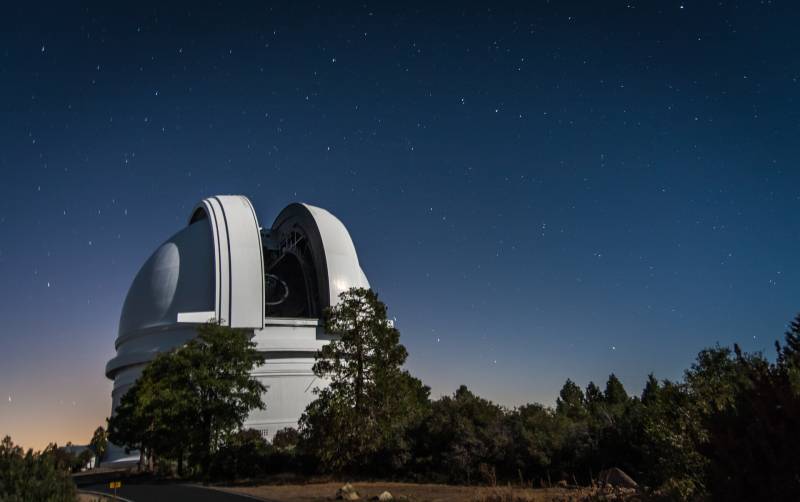The green comet we’ve all been hearing about, newly discovered by astronomers, can be seen in the northern sky between the Big Dipper and the North Star. On a clear night, and far away from city lights, Bay Area residents will be able to view this spectacular event from now until early February.
Ben Burress, Chabot Space and Science Center’s staff astronomer, advises facing north, then looking at the area of the sky to the right, above the horizon. “It’s the patch of sky immediately to the right of North, bounded between the Dippers,” he says. “Right now the comet is between the Big and Little Dippers. It will look like a small fuzzy patch of light, possibly slightly greenish.”
Burress recommends getting to darker viewing areas like Tilden Regional Park in Berkeley, the Chabot center in Oakland, Henry W. Coe State Park, Mount Diablo, Sunol Wilderness Regional Preserve, or anywhere else you can find light-sheltered viewing.
The comet, named C/2022 E3 (ZTF), was first spotted by scientists in March 2022 at the Zwicky Transient Facility on Palomar Mountain in San Diego County. At the time, the comet was inside the orbit of Jupiter.
Comets like this one are the building blocks from which the solar system is assembled.
“Comets are chunks of dirty ice — ice with lots of dust and dirt frozen into it left over from the days that the sun and the planets were first forming 5 billion years ago,” Andrew Fraknoi, astronomy professor at the University of San Francisco, told KQED in an email.
On the night between Feb. 1 and Feb. 2, the comet will be at its brightest, as it approaches its perigee, or the closest point at which it will come to Earth. While observers may be able to see the comet without visual aid during this time, it will still be easier to view the comet through binoculars or a small telescope. “[It] may have a faint tail, and may even appear to have two tails: a gas tail and a particle tail,” said Gerald McKeegan, East Bay Astronomical Society astronomer, in an email.
Trying to predict exactly how bright a comet will become is notoriously difficult. “One thing I always cite is a quote from comet hunter David Levy: ‘Comets are like cats. They have tails and they do precisely what they want,'” said Bing Quock, assistant director of the Morrison Planetarium at the California Academy of Sciences.
The comet will remain in the night sky for a few weeks, but observers will need a telescope to see it after the first week of February. By the end of March, it will be beyond the orbit of Mars, and even more difficult to see.

